Can you imagine an island within a lake that is situated on an island located in a lake on an island? Confused? Well, it is really confusing, but this island does indeed exist: Vulcan Points is the world’s largest island within a lake (Crater Lake) that is situated on an island (Taal Volcano Island) located in a lake (Lake Taal) within an island (Luzon).
Can you see the tiny blue shadow in the south of Manila, the capital city of the Philippines? (In the northernmost island, or Luzon Island.)
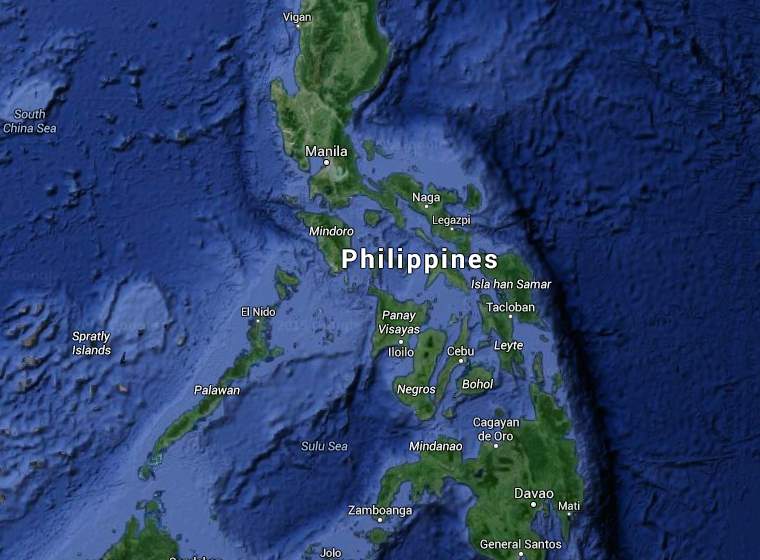
Well, if you can’t, the image below would help: look inside the tiny red rectangle.

Let’s take a look a bit closer. This lake (actually a crater lake) is Taal Lake.
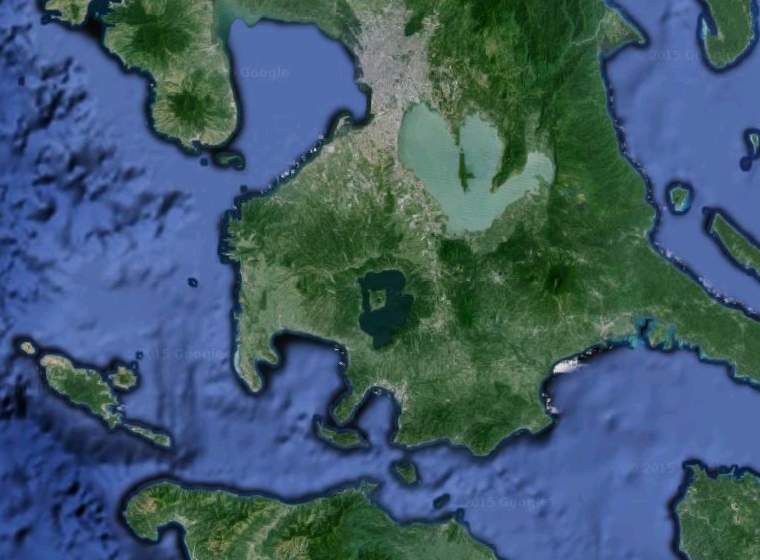
And closer… Now we can clearly see another lake (Crater Lake) on the volcano (Taal Volcano Island) inside the Taal Lake.
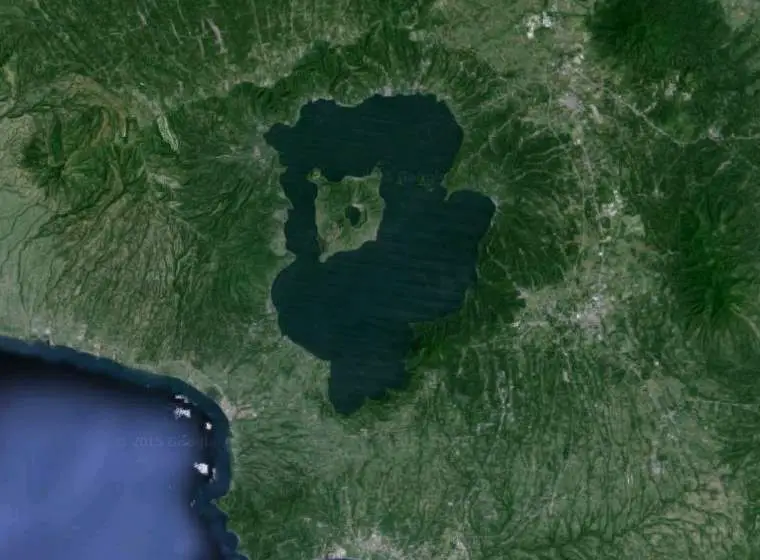
Let us continue. Surprise: There’s another island within the crater lake, like a Matryoshka doll.
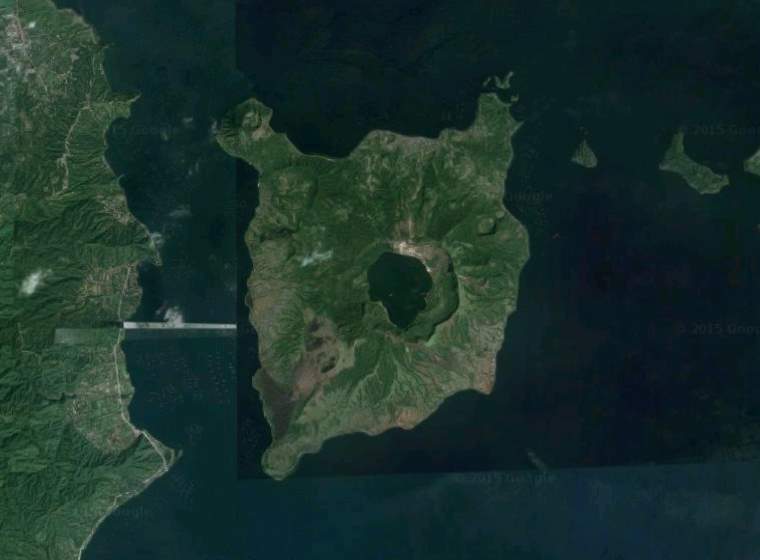
It’s a large rock, now called Vulcan Points that projects from the surface of the crater lake. It was the remnant of the old crater floor that is now surrounded by the 2-kilometer (1.2 mi) wide lake, now referred to as the Main Crater Lake.
Vulcan Points is the world’s largest island within a lake (Crater Lake) that is situated on an island (Volcano Island, or Taal Island) located in a lake (Lake Taal) within an island.
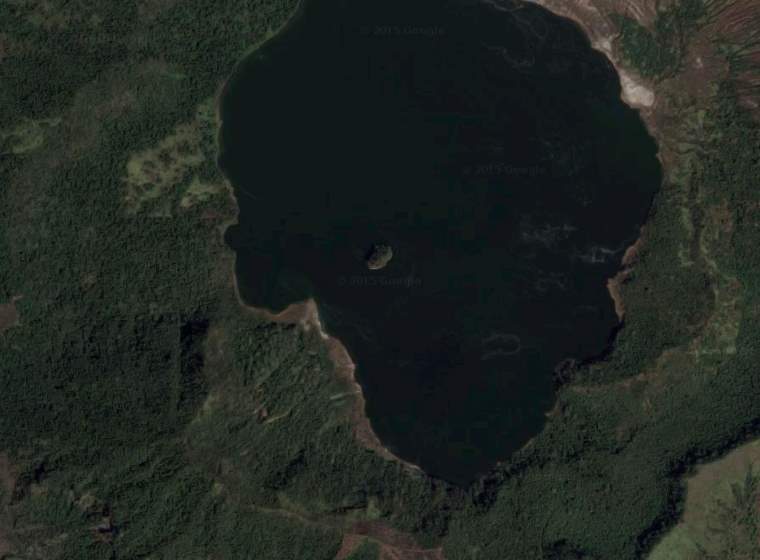
Vulcan Points location
Here is the Vulcan Points location on Google Maps:

Taal Volcano is a complex volcano. A complex volcano, also called a compound volcano, is a volcano with more than one feature. They form because of changes in their eruptive characteristics or the location of multiple vents in an area. It is the second most active volcano in the Philippines with 33 historical eruptions.
All of these eruptions are concentrated on Volcano Island, an island near the middle of Taal Lake. The lake partially fills Taal Caldera, which was formed by prehistoric eruptions between 140,000 and 5,380 BP. Viewed from Tagaytay Ridge, Taal Volcano, and Lake presents one of the most picturesque and attractive views in the Philippines.
The volcano had several violent eruptions in the past causing loss of life on the island and the populated areas surrounding the lake, with the death toll estimated at around 5,000 to 6,000. Because of its proximity to populated areas and its eruptive history, the volcano was designated a Decade Volcano, worthy of close study to prevent future natural disasters.
What is a Decade Volcano?
The Decade Volcanoes are the volcanoes identified by the International Association of Volcanology and Chemistry of the Earth’s Interior (IAVCEI) as being worthy of particular study in light of their history of large, destructive eruptions and proximity to populated areas.
There are a total of 16 Decade Volcanoes in the world. One example is Mount Etna in Sicily, Italy, Europe’s most active volcano, and also one of the most active volcanoes in the world.
Sources
- Taal Volcano on Wikipedia
- Decade Volcanoes on Wikipedia
- Space Shuttle Endeavour’s Touchdown Meets Columbia’s Salute [An amazing photo from the past] - February 29, 2024
- Moon Landings: All-Time List [1966-2024] - February 23, 2024
- From Orbit to Ordinary: 10 Earthly Applications of Space Technology - January 23, 2024


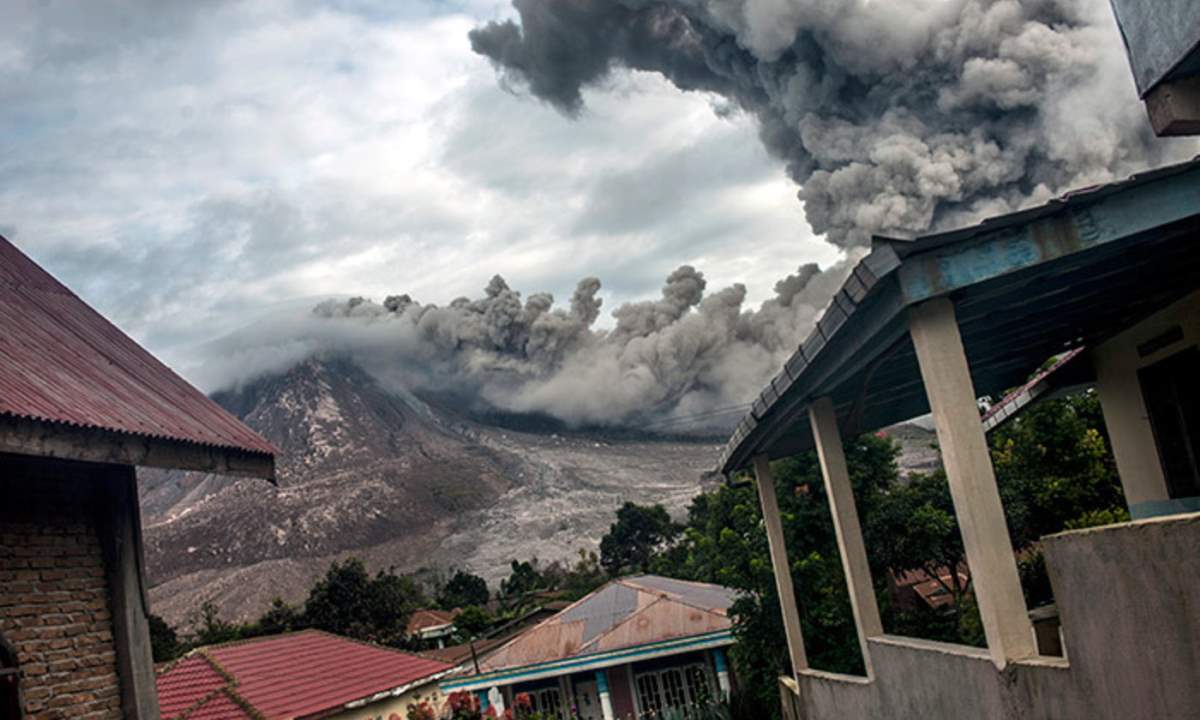

Beautiful … but Vulcan Point is not the largest such island. It’s about 80 x 50 metres in area. There’s an (unnamed) island in an (unnamed) lake on Glover Island in Grand Lake on the island of Newfoundland that’s about 110 x 120 metres in area (it’s at coordinates 47d 48m 48s N, 57d 39m 28s W)